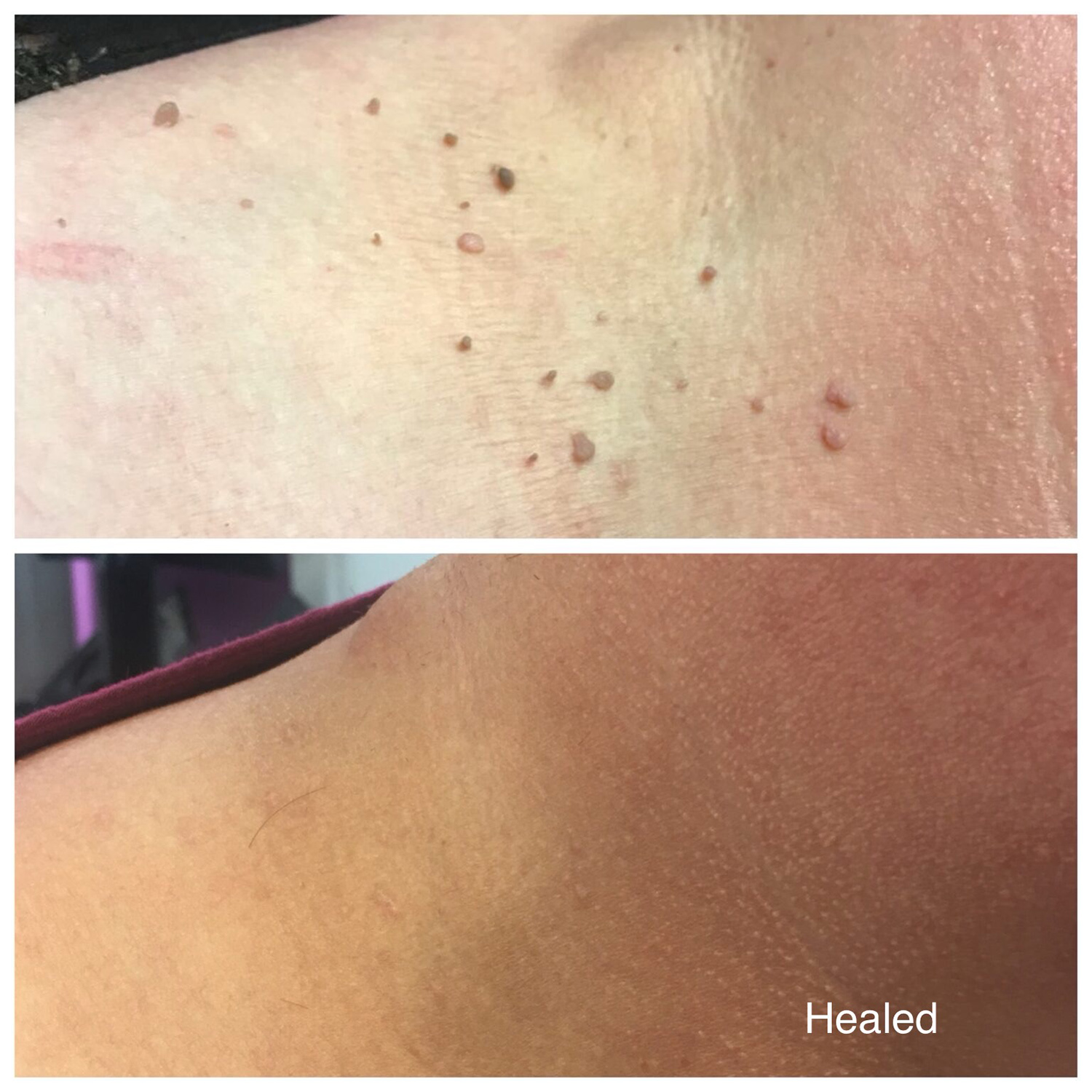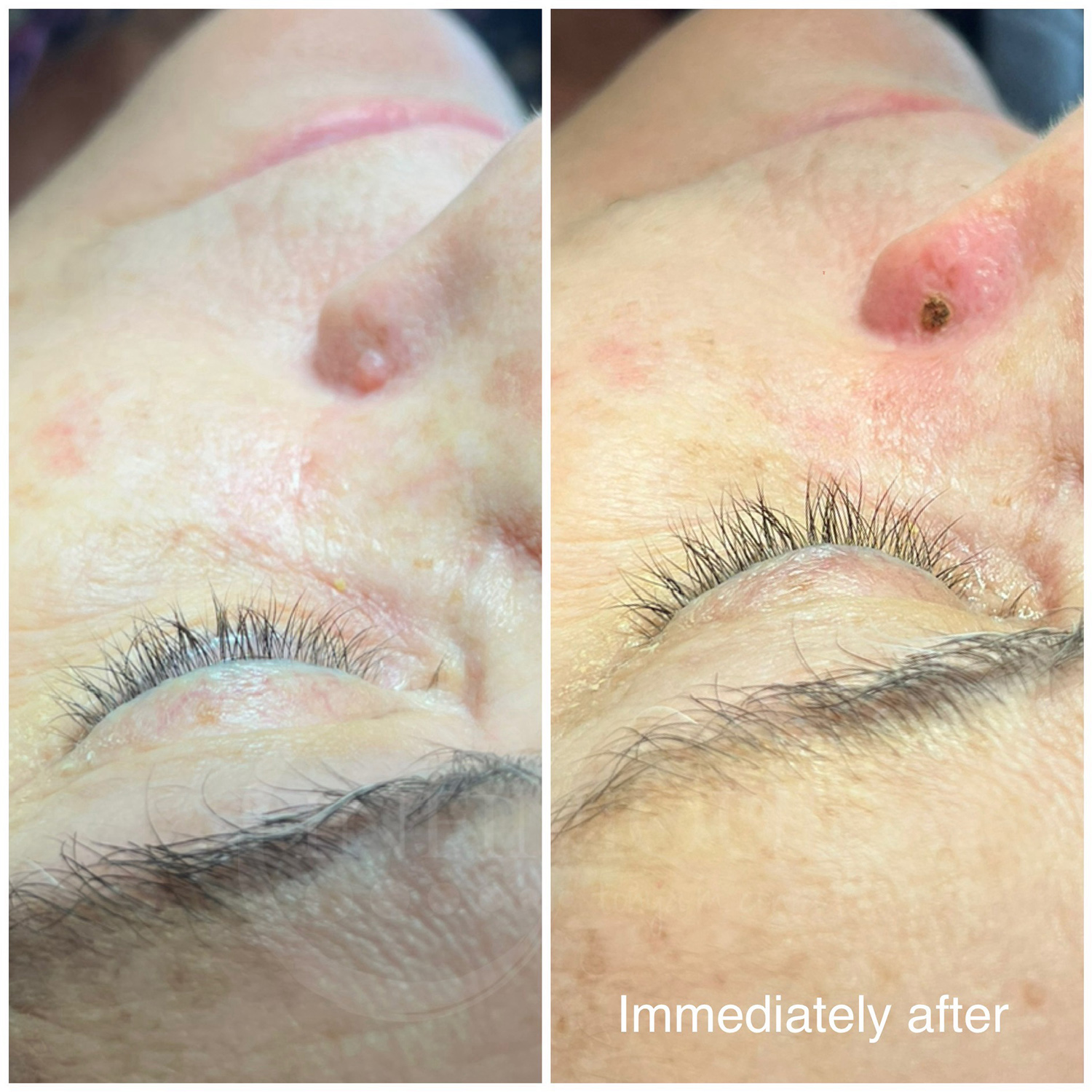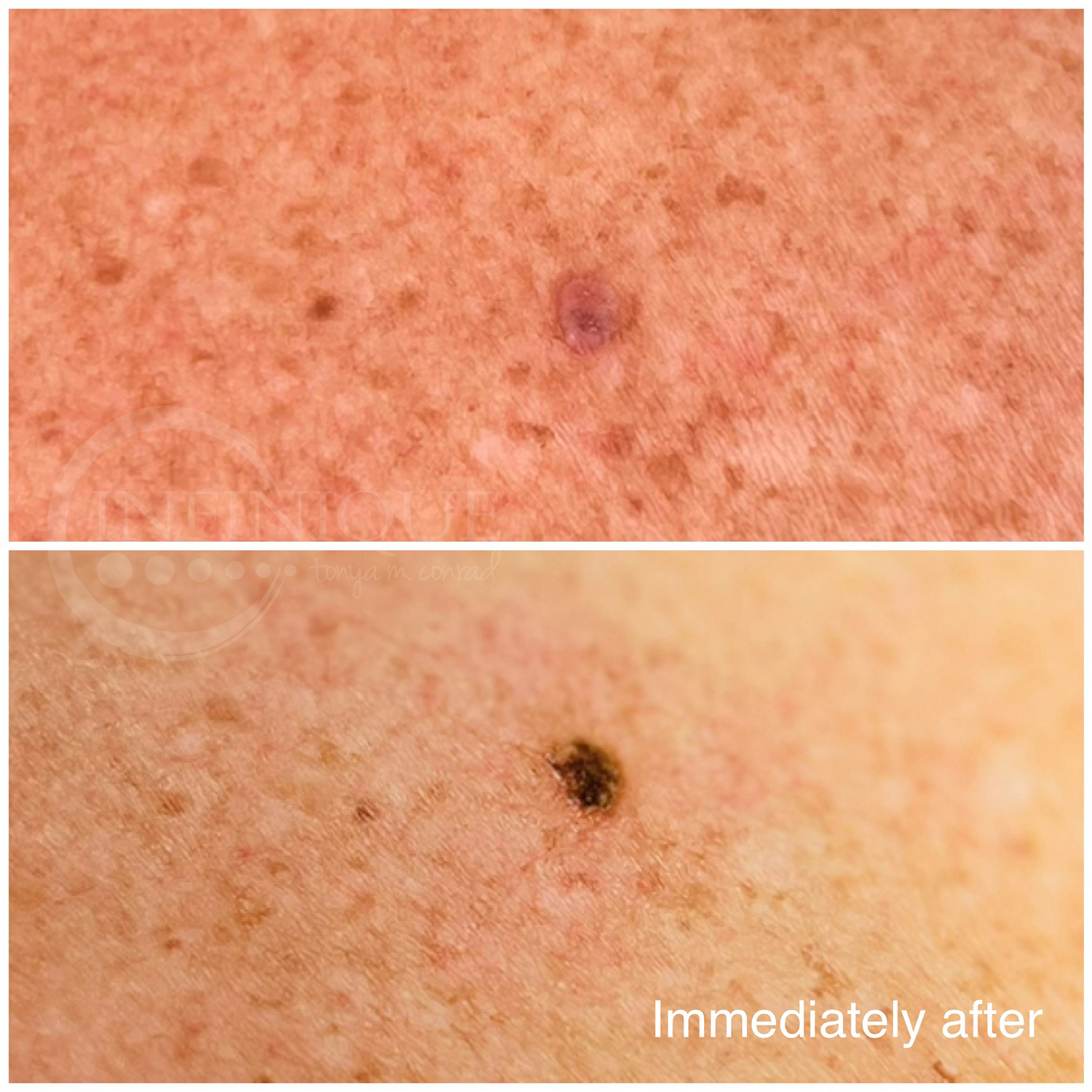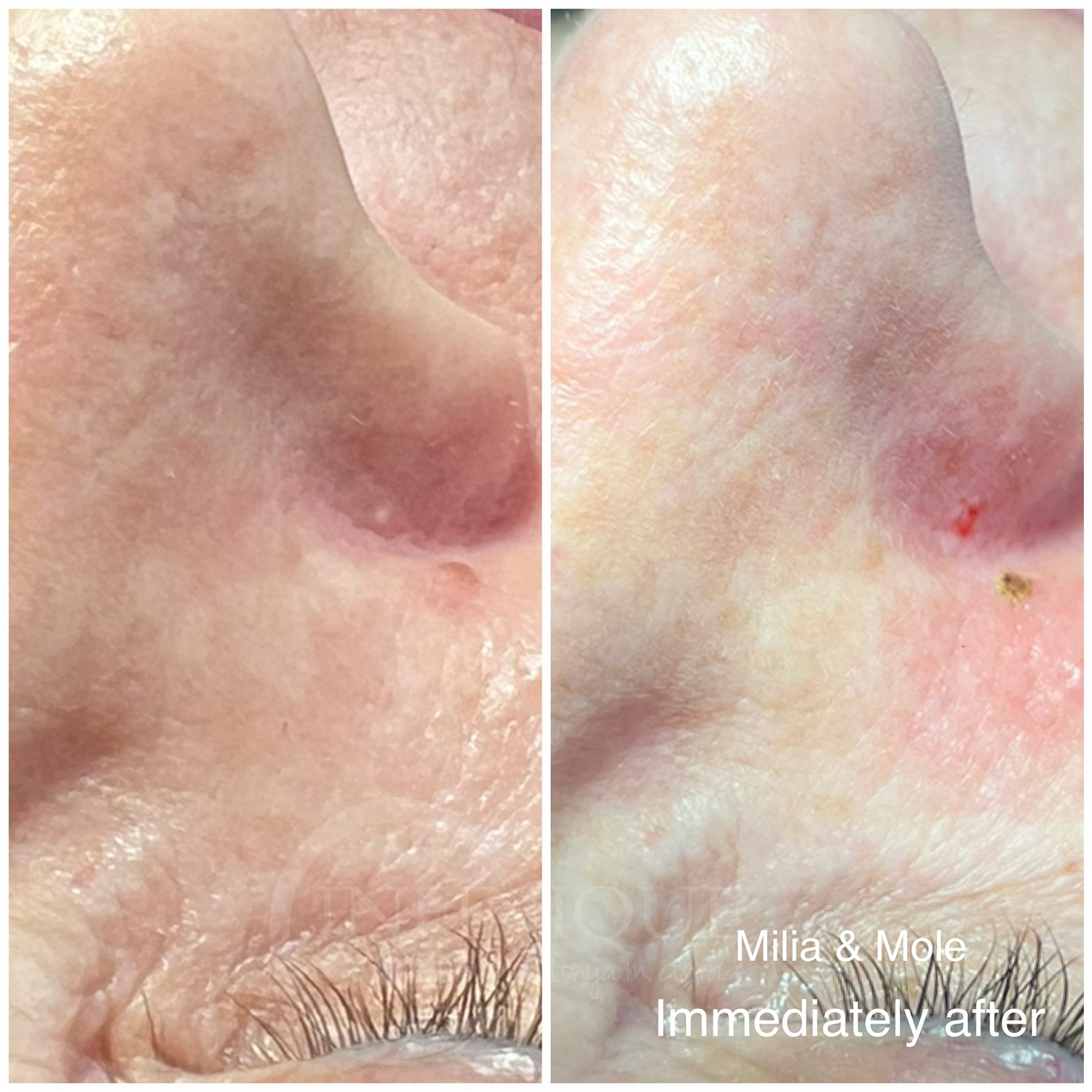“Oh my gosh, I’ll never run out of good things to say about Infinique Tonya and her amazing staff are always on top with innovative treatments that work. I had many moles and skin tags that I’ve been conscious about. I was quite anxious, as I have had them cut out in the past. This was the easiest and fasted way I have ever had them removed with no scaring. I will definitely be back!” – Jules
Mole, skin tag and age spots removal
Moles, skin tags, age spots, cherries and other skin growths – can truly affect your confidence. But fret not; as the Plasma Fibroblast Treatment is here to swiftly come to the rescue. The process is intriguing: the skin tag or mole that once bothered you starts to transform, becoming slightly crusty and dark in color. And then, within a week, it bids its farewell by gently dropping off. (skin tags are removed immediately)
Don’t worry about what’s underneath – the skin beneath might appear pink, but that’s just a sign of the healing process kicking in. And here’s the best part: all this happens in a flash. The treatment itself is incredibly easy and speedy.
How does it work
Plasma Fibroblast Arc is used to “vaporize” the skin, creating micro-injuries on the surface in the form of tiny burns. These burns will turn black and scab over as part of the body’s natural response to injury. Most scabs should fall off within a week or two. When they fall off, the skin tags, moles and other dark pigmentations will say “bye bye”.
We are able to safely remove a variety of skin growths, including Skin Tags, Moles, Verrucas, Warts, Cluster Warts, Blood Spots (Cherry Angioma or Morgan De Campbell), Milia’s (milk spots), Sebhorreic Keratosis, Xanthelasma, Sun Spots, Age Spots, and other Pigmentations.
Moles
Moles are skin growths that can appear black or brown, big or small and raised or not raised. Most people grow 10-40 moles. Moles are caused by melanocytes growing in a cluster rather than being spread out on the skin. Mole can also be a results of damage to DNA cells, which is the case of melanoma; cancer mole. Most moles can be removed in a single session, but occasionally bigger moles require a second treatment. Results should last indefinitely.
Nevertheless, the majority of moles are not a cause of concern unless they change in appearance (color, height, size, shape), bleed, itch, or become painful. If your mole does manifest these signs and symptoms – go see a doctor immediately to have it inspected before your appointment with us.
Skin tags
Skin tags are soft, skin-colored growths on the skin. They are very common and are usually small and harmless. Most common in areas where the skin rubs together.
Warts
Common warts are small, grainy skin growths that occur most often on the fingers or hands. They’re rough to the touch and often have tiny black dots. These dots are clotted blood vessels.
Dermatosis papulosa nigra (DPN)
When you have small brown or black spots around your cheekbones and eyes. Sometimes, you can find these spots on other parts of your face, neck, chest, and back. Some people might have only a few spots, while others might have lots of them. The spots can be flat or hang off your skin like a little tag. As you grow older, the bumps might increase in size and number. These are mostly common with darker skin types.
Keratosis
The growths (lesions) look waxy or scaly and slightly raised. Usually round or oval and range in color from light tan to black. They can develop as a single growth or in clusters. People tend to get more of them as they get older. These are common to see on the back, face, neck or chest.
Milias
Trapped dead skin cells that form a hard white head below the surface of your skin are “Milias”. You have probably noticed they don’t pop and you can’t get rid of them. Your body naturally gets rid of dead skin cells by shedding them to make room for new cells to grow and take their place. When your old skin cells don’t fall off of your body, new skin grows on top of them and traps them underneath. Common area is around and under the eye area and cheeks.




Cherry angiomas
Cherry angiomas look like little red moles on your skin that are not harmful to your general health. Angiomas typically form after the age of 30, and can be removed if you do not like the way they look.
Is it painful
Everyone has his or her own tolerance to pain. Descriptions of the discomfort vary from “no worse than a mosquito bite,” to “like having a rubber band spark against my bare skin hard.” Not every area is equal. The degree of pain is also relative to the area of treatment. Each spark goes super quick.
Warning
You are to first get advice from a dermatologist, doctor, or medical adviser before undergoing this treatment especially on any worrisome moles that appear irregular, crusty, or discolored. We want to get rid of moles safely, effectively, and without letting them grow back. Clients are advised to have their moles cleared as non-cancerous in order to receive this treatment. We cannot diagnose moles here!
It can be risky to remove a potentially malignant (cancerous) mole without first getting a proper medical evaluation. You can only schedule this treatment if your doctor has given the clearance.
After
You may experience side effects such as swelling, redness, and tenderness. The treated area will appear very dark and will form black scabs. Generally, these scabs will start to come off after 5-7 days, although it may take longer in some areas. It is important to refrain from picking at the scabs or wearing clothing that could rub against them in order to prevent scarring on the skin underneath.
Avoid getting the area wet for 48 hours. We recommend using our ScarMin Silicone ointment after 48 hours for several weeks to help reduce any scarring and speed up the healing process. It is crucial to keep the treated area clean and dry, which includes refraining from using makeup and other products. Keep out of the sun.
How much
Current prices and daily deals are found here https://www.vagaro.com/us04/infinqiueskinandspallc


